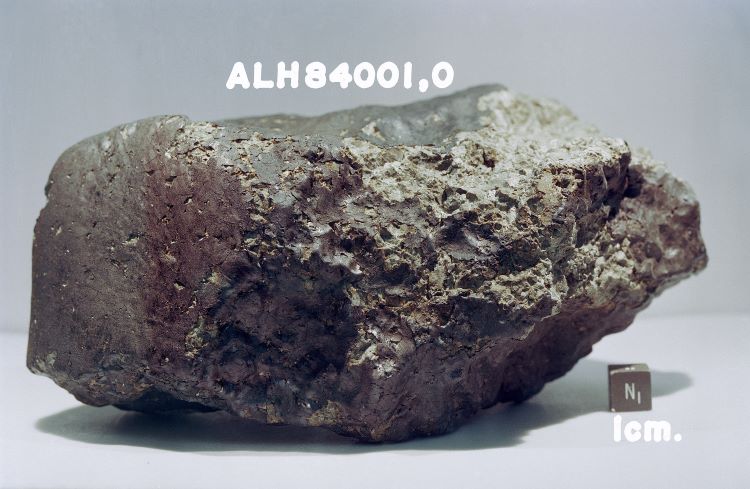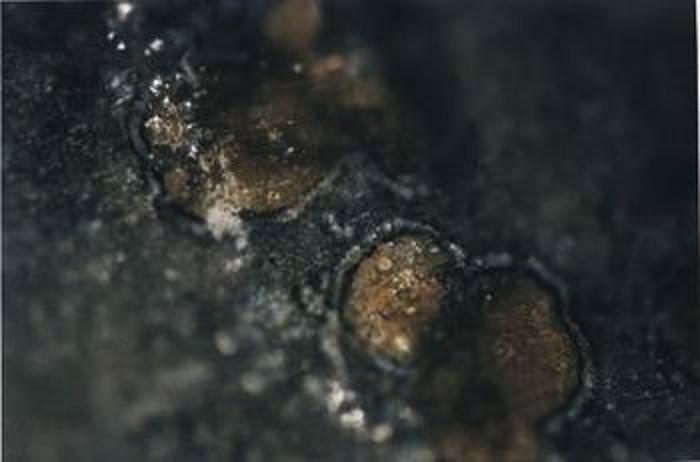[/caption]
It might be four billion years old, but this meteorite which may have originated near the surface of Mars has a story to tell… one about a warmer and wetter history. Researchers at the California Institute of Technology (Caltech) have been analyzing the carbonate minerals contained within the Martian meteorite – ALH84001- and piecing together a climate history which showed the minerals formed at about 18 degrees Celsius (64 degrees Fahrenheit).
“The thing that’s really cool is that 18 degrees is not particularly cold nor particularly hot,” says Woody Fischer, assistant professor of geobiology and coauthor of the paper, published online in the Proceedings of the National Academy of Sciences (PNAS) on October 3. “It’s kind of a remarkable result.”
All recent studies, from rovers to spectroscopy, point to Mars having once had a much more temperate climate than its current average temperature of -63 degrees Celsius. Missions have photographed dry river beds, deltas, extinct lakes and more. Up until now, the one crucial point has been the lack of physical evidence. “There are all these ideas that have been developed about a warmer, wetter early Mars,” Fischer says. “But there’s precious little data that actually bears on it.” That is, until now.
Of course, this mineralogical evidence is strictly one point – but it’s one point closer to knowing the full score. “It’s proof that early in the history of Mars, at least one place on the planet was capable of keeping an Earth-like climate for at least a few hours to a few days,” says John Eiler, the Robert P. Sharp Professor of Geology and professor of geochemistry, and a coauthor of the paper. The first author is Itay Halevy, a former postdoctoral scholar who’s now at the Weizmann Institute of Science in Israel.
Where did this new evidence come from? Try ALH84001, a Martian meteorite discovered in 1984 in the Allan Hills of Antarctica. While scientists cannot definitely prove where it came from, ALH84001 is theorized to have once originated several hundred feet below the Martian surface and was blown Earthward during an impact event. The Martian meteorite made headlines in 1996 when little inclusions that appeared to be fossilized bacteria were discovered. Even though the thought of simple life forms were quickly shot down, the pockets which contained carbonate minerals remained an enigma.
“It’s been devilishly difficult to work out the process that generated the carbonate minerals in the first place,” Eiler says. But there have been countless hypotheses, he adds, and they all depend on the temperature in which the carbonates formed. Some scientists say the minerals formed when carbonate-rich magma cooled and crystallized. Others have suggested that the carbonates grew from chemical reactions in hydrothermal processes. Another idea is that the carbonates precipitated out of saline solutions. The temperatures required for all these processes range from above 700 degrees Celsius in the first case to below freezing in the last. “All of these ideas have merit,” Eiler says.
Deducing the temperature may help scientists to understand how the carbonates came to be, so a form of modeling called clumped-isotope thermometry was employed to help. It’s so sensitive it’s able to determine a dinosaur’s body temperature in relation to Earth’s climate history. In this case, the team measured concentrations of the rare isotopes oxygen-18 and carbon-13 contained in the carbonate samples. Carbonate is made out of carbon and oxygen, and as it forms, the two rare isotopes may bond to each other – clumping together, as Eiler calls it. As the temperature progressively lowers, the isotopes do their thing and clump. The degree to which this happens is directly related to temperature. The temperature the researchers measured – 18 ± 4 degrees Celsius – rules out many carbonate-formation hypotheses. “A lot of ideas that were out there are gone,” Eiler says. For one, the mild temperature means that the carbonate must have formed in liquid water. “You can’t grow carbonate minerals at 18 degrees other than from an aqueous solution,” he explains.
Through this new information, it is also hypothesized the minerals may have come into existence inside the cavities of rock while it was below ground. “As the water evaporated, the rock outgassed carbon dioxide, and the solutes in the water became more concentrated. The minerals then combined with dissolved carbonate ions to produce carbonate minerals, which were left behind as the water continued to evaporate.” A vessel for life? Well, chances aren’t good since any liquid water would have lasted for only a brief time – but it is a great indicator that this precious life-giver was once a part of Mars’ history.
Original Story Source: Caltech News Release.


